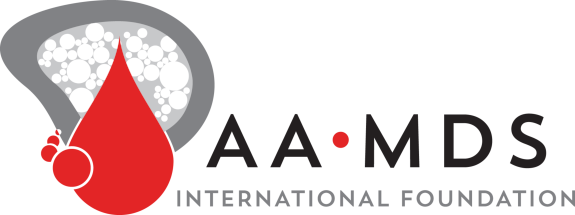You may be surprised to learn that our current understanding of MDS only began in the 1970s. Although related studies were conducted for many decades prior, myelodysplastic syndromes (MDS) was not well known and it was further complicated by common use of the term ‘pre-leukemia’ to describe it. The relationship of MDS to similar hematologic conditions was poorly understood.
1976: In the beginning, there was FAB.
About 40 years ago, an international group of seven researchers began to study differences in leukemia cases. In 1976, this group–(known as FAB, for French, American, British) published research on two conditions chronic myelomonocytic leukemia CMML) and refractory anemia with excess blasts (RAEB) that could be confused with acute leukemia. These conditions were considered pre-leukemic states and were called ‘dysmyelopoietic syndromes’.
1982: FAB: MDS is first formally defined and classified
In 1982, the FAB group established the term ‘myelodysplastic syndromes’. They introduced classification categories used to assess MDS that endured until the end of the century. Based on the percentage of blasts (young, immature blood cells) in bone marrow and blood, the FAB system had five MDS categories, or subtypes. Yet investigators soon realized there was a need to better predict how MDS will act as time passes.
1997: IPSS points to prognosis
A study of over 800 patients published in 1997 was the basis for the International Prognostic Scoring System (IPSS). Even today, the IPSS remains the most widely used system to estimate severity of MDS and probable survival terms.
IPSS is based on three criteria. Like FAB, it includes percentage of blasts in bone marrow, but it also includes two other measures. One is karyotype (also known as cytogenetics) or abnormalities in bone marrow chromosomes. The other is cytopenias, which are low blood cell counts of any or all three types of blood cells (red blood cells, white blood cells, or platelets). From these combined criteria, a numerical score is drawn. That score is associated with one of four risk categories: low, intermediate- 1 (grouped together as low-risk MDS), and intermediate-2 and high (which are grouped as high-risk MDS).
2001: WHO introduces a more highly refined MDS classification
The World Health Organization (WHO) first introduced their classification system in 2001. This described additional MDS subtypes (removing and adding some categories to the original FAB group). This resulted in a total of ten MDS classification categories.
2008: Researchers refine the WHO classification to the current standard for distinguishing and describing MDS subtypes.
Less than ten years after it was first produced, the WHO classification system now has 11 subtypes, including one for MDS that does not fit any classification and one for rare pediatric MDS cases. This remains a widely used classification of MDS.
2012: A revisitation leads to a revision, and the IPSS-R is launched.
Based on a large study of over 7,000 patients, the most recent MDS classification system is the Revised International Prognostic Scoring System (IPSS-R). The IPSS-R includes increased importance assigned to cytogenetics. Risk categories expand from four to five with this revised system. However, both IPSS and IPSS-R are limited in the respects that they only account for newly diagnosed cases that have not received any treatment. Neither account for the effect of other diseases or health conditions a patient may have. As more patients and physicians become familiar with it, it is anticipated that IPSS-R will replace IPSS.
2015 and beyond:
As research continues, the standards for describing the many MDS subtypes and systems for comparing their relative severity continues to evolve. We have come a long way in understanding and classifying MDS. Using these advances in classification allows more precise treatments to be developed.
“MDS research is more exciting than it has ever been by far. We have more good science occurring right now than we have ever had.” -- Dr. Benjamin Ebert, Dana-Farber Cancer Institute


